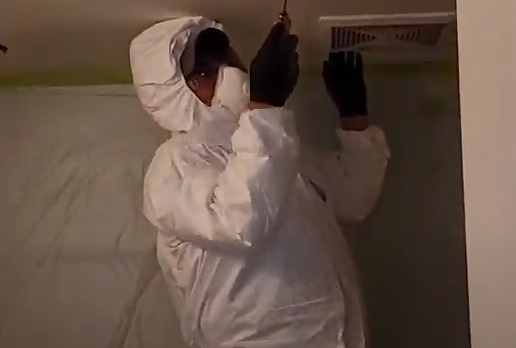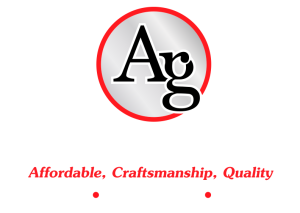Ways to identify mold in your house
Whether you’re a first-time homeowner or have lived in a home for years, you may have experience unknowing but without being able to identify mold. Having all of the facts about mold identification and remediation is critical for healthy living.
Do you know that mold emits spores into the air when it begins to grow within a residence?
Breathing these spores into one’s lungs can create a range of health concerns, especially in people with asthma or other upper respiratory difficulties.
Mold is a collection of microscopic organisms that flourish in damp, dark conditions. When found in nature, it assists in the decomposition of dead plants and trees. But when it grows within, it can rapidly become an issue.
How does it get into your house?
Mold can infiltrate your home through open doors, windows, vents, and heating and air conditioning systems. Can transfer airborne mold indoors by piggybacking on clothing, shoes, luggage, and pets. It blooms almost everywhere that has sufficient moisture or humidity.
Mold survives in moist environments like a shower or bathtub. It can, however, take hold of any home surface exposed to dampness, such as walls, ceilings, carpets, or furniture. Becoming a fungus:
- Growing from minute spores floating in the air.
- Then spore clusters multiply and become visible to the naked eye when they grow on surfaces.
- Then causes an attack on allergies, asthma, or other lung ailments.
You might not notice that you have mold until you see it or smell it. Until you experience a damp, musty odor and indicator that mold is growing within.
You might be not sure how to identify mold, so here are different tips on how to detect it.

How Do You Know If Your House Has Mold?
Mold is a fungus, and there are thousands of different kinds of fungi on the planet. It would be impossible to cover all of them here, but there are a few fundamental types of mold to be aware of. Some are entirely innocuous and only need to be cleaned up. Others might create significant complications if not treated and removed by a specialist. The best way to identify mold is to smell.
What Is the Odor of Mold?
As with wet socks or decaying wood, the smell of mold is described as musty and earthy by most people. Mold odors can have a wide range of qualities. However, the following are some of the more typical smells:
Drenched in sweat: Wet dog hair or a locker room that smells like sewage
Fermentation or Rotting: like aged cheese, rotting fruit, or making alcoholic beverages
Tangy and sour: The smell of sweaty armpits after a strenuous jog
Musty or stale: in the same way as a stuffy attic that hasn’t been opened in months smells like old socks
Earthy: the soil beneath the decaying leaves of a dense forest

Tips to Identify Mold in Your Home
Although you don’t need to know the specific species of mold to know there’s a problem, learning how to notice mold growing in your house is a brilliant idea. The sooner you identify mold in an area, the smaller the issue will be and the easier it will handle.
Check Around
If you’re looking for mold, the first thing you need to do is check around. Is water gathering under the sink in the bathroom, or is the basement particularly humid? Does a lot of condensation surround your HVAC unit?
Large areas of hairy or slimy mold may be visible in some circumstances if the mold has increased or been allowed to grow for a long time. Mold, however, is generally detectable before it reaches that stage.
Examine your ceilings, walls, windowsills, and floors for stains or discoloration as mentioned before odor is key to identify mold. Pay extra attention to wallpaper, rugs, and furniture, especially if they’re near a window or older and have been exposed to a lot of humidity or moisture over time.

Smell Correctly
A musty or damp odor can be caused by certain varieties of mold, mainly if they’re found in a basement or an area with poor ventilation. There are several places where pipes might leak and cause water damage, including the bathroom and the kitchen. You will catch a whiff of something strange; follow your nose to identify mold.
You may use your smell clues to find where the moisture and mold are coming from.
Check Crawlspace
A crawlspace in your home can lead to leaks and dampness that you may not be aware of until it’s too late. Checking your crawlspace will help you catch any potential leaks or moisture buildup due to the area’s rain or humidity.
You can monitor the moisture levels in your crawlspace; if necessary, install a pump to lower them.


Check Your Immediate Family
Has anyone in your family been having strange symptoms of the upper respiratory system? No, they don’t have a diagnosis or a treatment that has worked for them.
Mold allergies might be challenging to spot since they can seem like allergies to many other things. As a parent, you may want to take a deeper look at what’s happening at home if you find your family suffering from recurring health issues.
If you are concerned that mold is affecting your family but you are not sure what the exact syntoms are. please check out this “Mold Allergy” which will provide you the information you need to address any doubts.
Mold issues can have severe consequences and many times hiring a professional to do a mold inspection can be more affordable than a hospital bill.
Do you Identify Mold Any Clues?
When mold is suspected, you may wish to do a mold inspection before you see any symptoms. Take the time to inspect your home for early signs of mold growth if it has recently been subjected to a prolonged period of high heat and humidity, flooding in or around your home or a leak in your roof or pipes. If you identify mold at an early stage, take care of it as soon as possible before it spreads.
Finding a solution will be much simpler if you promptly identify mold. And the best way is to hire an expert.

Hire an Expert
There is no harm in getting professional mold remediation or Plumbing to inspect your home for signs of mold, even if you can’t see or smell it.
They can identify mold, trouble spots, determine what kind of mold is growing, and provide methods for eradicating the mold from your house permanently and safely. The health and well-being of your family should be your primary concern, and taking issues into your own hands could put you at risk.
Call Agenta painting for mold remediation services and air quality services in Canada. Our dedication to quality has built a solid reputation throughout our environs. We’re here to help, whether you’re dealing with an existing mold issue or planning ahead. Call us at 604-763-7995 or contact us online to learn more about our air quality testing services.

